On April 14, the Ministry of Plant Protection, the Northern Plant Protection Center in cooperation with the Ministry of Agriculture and Rural Development in Phu Tho held a conference on “Implementing the Prevention of Large Pests on Rice in the Early Stages of the End of the Winter-Spring Harvest 2022-2023 in Northern Provinces”.
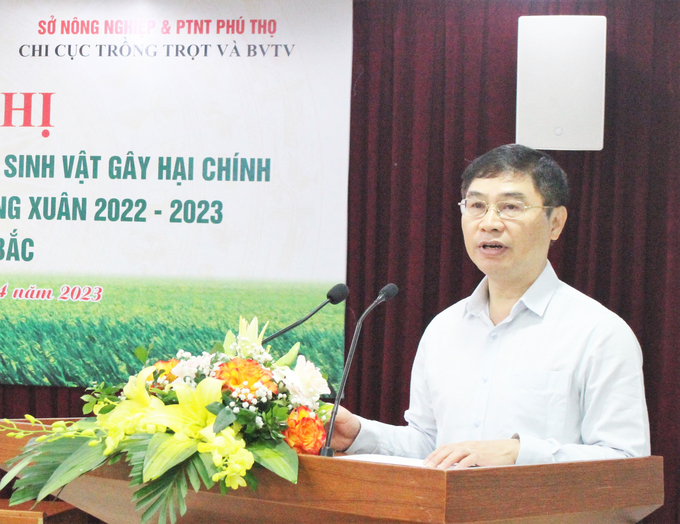
Mr. Nguyen Quy Duong, deputy director of the Plant Protection Department, urged local authorities not to subjectify or neglect the situation of harmful organisms on rice crops in winter and spring. Picture: Trung Quan.
Cotton neck Taoism trend spread
According to the Northern Plant Protection Center, the total planting area of winter-spring rice crop from 2022 to 2023 is more than 709,500 ha. In which spring tea is earlier than 41,100 ha (in the stage of bud flowering development). The main tea harvest is more than 281,600 ha (standing on stage – making poles). Spring tea is later than 386,700 ha (full tillering stage – late laying).
To date, the main pests such as leaf bursting, leaf blight, leafhoppers, planthoppers, powdery mildew, mouse… have a narrow distribution area and a lower level of damage compared to culture.Winter-Spring 2021 – 2022. In particular, the density and distribution area of leaf moth moths of the first generation is higher than that of the winter-spring crop 2021 – 2022.
In the final phase of the season, in April, the temperature in the north is usually 0.5 degrees Celsius above the long-term average, according to the Central Hydrometeorological Forecasting Center. The intensity of the heat is expected to be more intense than the same period in 2022. The total rainfall from April to June is roughly the average…
Regarding the situation of the main pests of rice, cotton collard disease caused damage from the end of April and tended to be higher than the same period last year, especially on infected varieties, rice areas affected by rice blast severely, especially the area of opened rice – among favorable Conditions for the occurrence of cottonneck disease exposed to color.
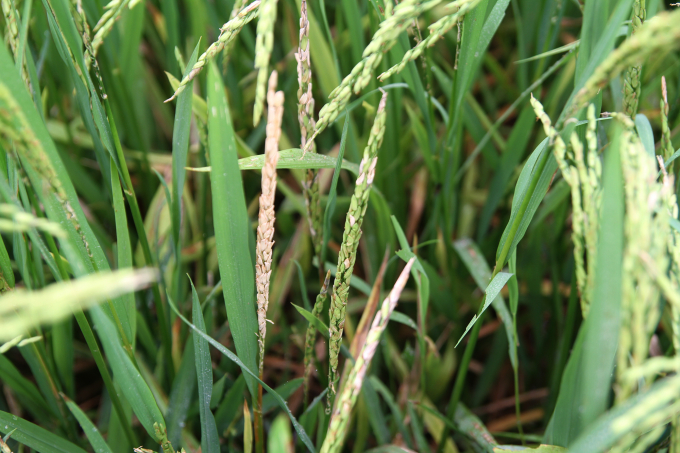
At present, explosive disease tends to occur, causing increased damage in some places. Picture: tsp.
– Adult second-generation leafrollers develop from mid-week to late April, juvenile damage from late April to early May. This is the main pest in winter-spring crops on the main spring rice crops – late whip stage – before emergence. Young caterpillars cause severe damage in the Coastal Plains provinces and the North Midlands. In lowland and midland provinces, the density is between 10 and 30 fish/m2, the height is between 40 and 50 fish/m2. In coastal provinces, the usual density is 30 – 50 fish/m2, where the height is 50 – 100 fish/m2, locally 300 – 500 fish/m2, and the distribution area is wider than the same litter of the 2021 – 2022 winter-spring crop. .
The third-instar ripening stage is concentrated in mid-May, the young caterpillars mainly damage late spring green rice.
– Brown planthoppers, second generation white-backed planthoppers focus on early spring rice – the main crop in the flowering stage – for sucking milk and on late spring tea in the pre-spring stage – before flowering, from late April to early May. Wide distribution area, common density 300 – 500 fish/m2, high 2,000 – 5,000 fish/m2, nest > 10,000 fish/m2, low fire potential from the beginning of May, especially in infested varieties.
The third stage causes damage from mid to late May, mainly on late spring tea at the green-red tail stage, especially in the coastal delta provinces. Usual density is 500 – 1,000 animals/m2, tens of thousands animals/m2, possibility of multiple fires mid to late May to early June if not well organized.
– Adult 2-spotted stem borer, second generation, flowers late April to mid-May, young caterpillars cause silvery growth, especially on rice from early to mid-May, frequency of damage 1-3%, in high places 10-15% cotton.
– Blight, Rot, Bacterial Streak Disease, Rat… cause more damage from now until the end of the harvest. Grass rice (ghost rice) tends to increase…
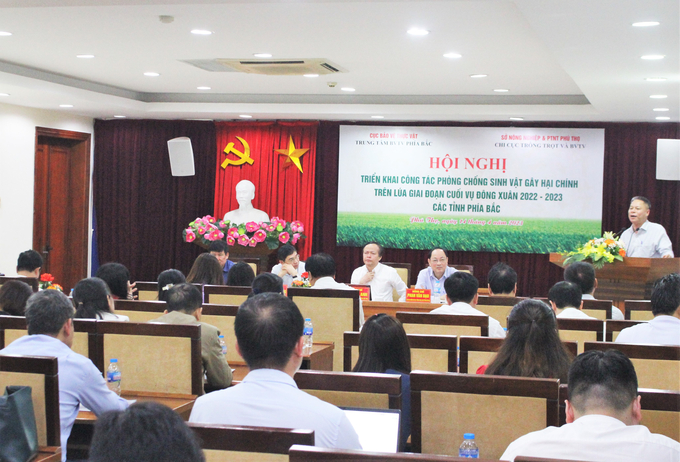
The Northern Provinces Sub-department of Cultivation and Plant Protection provided information on the situation of pests and diseases in rice. Picture: Trung Quan.
Based on this, the Plant Protection Ministry requested the northern provinces to closely monitor the weather changes and the flowering period of rice plants in cotton collard disease to actively guide spraying to prevent the disease. Pay special attention to early-growing paddy areas in April, especially infected varieties.
For small leafmoth moths, the source of the first generation caterpillars is high at present, the weather is very complicated, so each province needs to organize an investigation and follow the development of small leafmoth moths, only to choose the right time for the organization of prevention is reasonable and effective .
In the case of brown planthoppers and planthoppers, it is necessary to stay in the field and organize good prevention against second-generation planthoppers to reduce the pressure from third-generation planthoppers.
Continue to closely monitor black-striped dwarf virus on planthoppers and winter spring rice to actively control black-striped dwarf disease in winter rice from the start of harvest.
Beware of black striped gnomes
Mr. Nguyen Quy Duong, deputy director of the crop protection department, judged the weather from the start of the winter-spring harvest until now not favorable for rice production. At the beginning of the harvest there was a dry situation, lack of water, so sowing was difficult. To date, the prolonged wet and rainy weather creates favorable conditions for the development of many types of pests. In some places the density of leaf blasting, leafrollers… is above average. Some localities had to prevent up to 2 times directly.
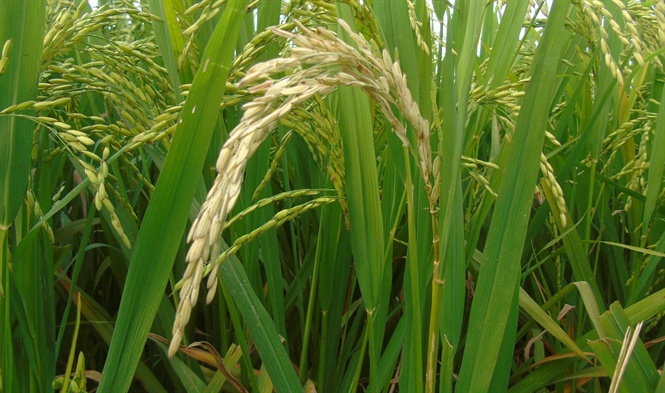
According to the Ministry of Plant Protection, the cotton neck blast will cause damage from the end of April and tends to be higher than the same period last year, especially in infected varieties. Picture: tsp.
From now until the end of the harvest, the weather conditions continue to be unfavorable for the growth and development of rice, but very favorable for the development of pests and diseases. In particular, during the period from May 5th to May 15th is the main flowering period of peak tea and late tea, it is predicted that this period will also occur from 4-6 late cold spells (Nang Ban cold). Therefore, according to the assessment, this will be a dangerous time for rice in the northern provinces. Because such weather conditions will be very favorable for the development of Cotton Neck Blast. If the localities do not order prevention in time, the disease is easy to spread widely and directly endanger the productivity and yield of rice.
Mr Duong also pointed out that the Plant Protection Agency recently coordinated with a number of northern locations to collect samples to monitor the circulation of the dwarf black stripe virus (LSD), which damages rice in the field. The results showed that the proportion of leafhopper (disease vector) samples that carried the virus was approximately 6% of the virus-carrying samples. This is alarming for winter-spring rice. Because in the last 2 years the rate of cicadas carrying the LSD virus has been very low, especially in the winter-spring harvest. Therefore, sites need to closely monitor the development of leptospirosis, especially at the end of harvest.
Mr. Duong also requested that from now until the end of the harvest, this will be the crucial period for the success of the winter-spring rice harvest. Therefore, the subdivisions of crop production and crop protection in the northern provinces must increase the appointment of officials to inspect the fields to be sure that pests are developing, especially in the annual spots where small leafrollers burst with high density ; Combine monitoring of weather changes and plant growth. From there, accurate identification, estimates and timely forecasts about the ability to emerge, the area of distribution, the harmful extent of pests and diseases, and direct effective control.
Also, inform authorities at all levels in a timely manner to develop plans and proactively manage on-site pest control.
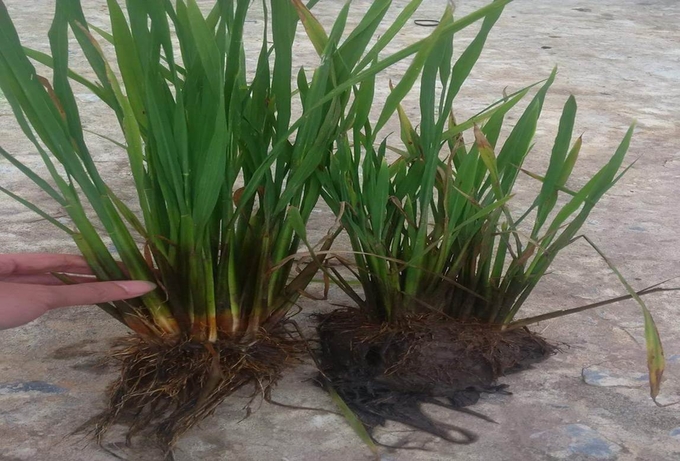
The Department of Plant Protection recommends that locations should be very wary of dwarf black stripe disease. Picture: tsp.
The Plant Protection Department suggested municipalities to increase information and propaganda on all mass media channels about the situation of harmful pests and diseases so that people understand them. Also, educate farmers on pest control techniques and use the “right 4” pesticides principle.
Currently, material prices are trending downwards, many households have begun to increase the amount of fertilizers, especially nitrogen. Therefore, professional agencies need to strengthen the recommendation of people to use it properly, because too much use can create favorable conditions for the occurrence of blast disease and cause harm.
In addition, there is a need to strengthen the inspection work to ensure the stability of the pesticide trade market and best serve the pest control work.

